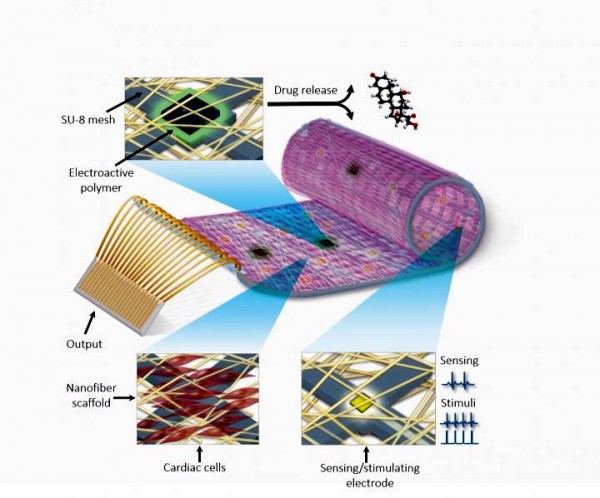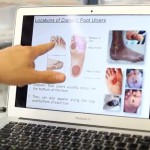
A remotely regulated living bionic heart is pictured. The engineered tissue is comprised of living cardiac cells, polymers, and a complex nanoelectronic system. This integrated electronic system provides enhanced capabilities, such as online sensing of heart contraction, and pacing when needed. In addition, the electronics can control the release of growth factors and drugs, for stem cell recruitment and to decrease inflammation after transplantation.
“Create in me a pure heart, O God, and renew a steadfast spirit within me.” (Psalm 51:10)
Researchers at Tel Aviv University (TAU) report that they have developed a bionic heart patch that combines both organic and engineered elements. The device has capabilities that are said to surpass human tissue alone.
“With this heart patch, we have integrated electronics and living tissue. It’s very science fiction, but it’s already here, and we expect it to move cardiac research forward in a big way,” said Dr. Tal Dvir, who leads the Tal Dvir Lab for Tissue Engineering and Regenerative Medicine at TAU. (TAU)
The patch, which integrates electronic components into engineered tissue, will monitor heartbeats and intervene whenever necessary to restore proper functioning. At the same time, there are particles in the patch designed to release anti-inflammatory drugs as needed. It will provide real-time data to both patients and their cardiologists, who can administer treatment remotely.
“The idea is to monitor heart activity online using nano-electronics, and when necessary regulate the engineered tissue activity — and even to release drugs at the push of a button with the help of special polymers we developed,” Dvir said, emphasizing that the leading cause of death in Western countries is heart disease. Fifty percent of those who suffer from the disease die within five years. (JNS)
“Until now, we could only engineer organic cardiac tissue, with mixed results. Now we have produced viable bionic tissue, which ensures that the heart tissue will function properly,” Dvir told American Friends of Tel Aviv University. (Times of Israel)
The patch has not yet been tested on patients and will take some time to fully develop, but it is considered to be promising. Scientists are hopeful that this technique can be applied to neurological conditions affecting the spinal cord and brain, as well.









